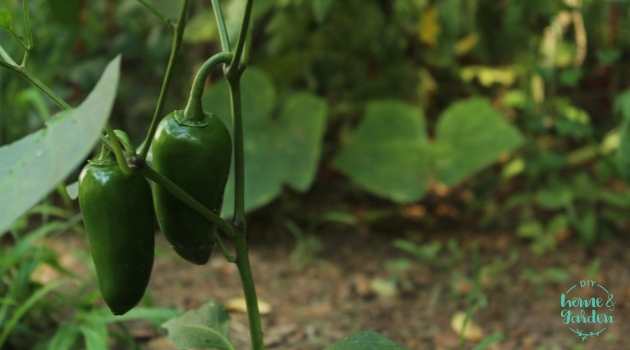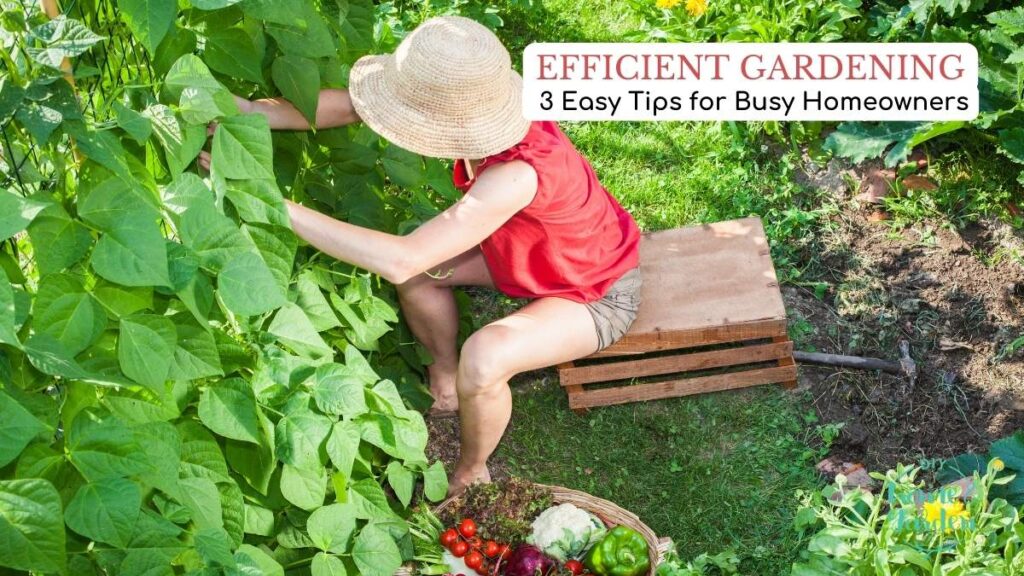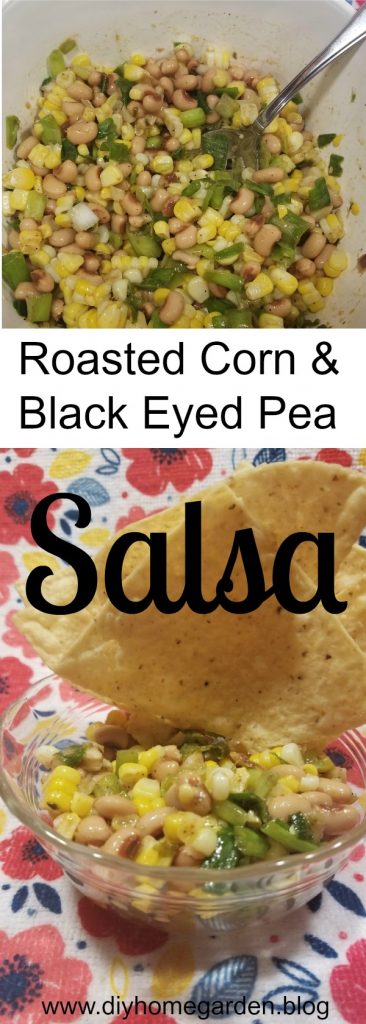Salsa gardening brings the tastiest rewards.
Salsa gardening can be a delightful journey where your garden transforms into a vibrant source of fresh flavors. Imagine stepping outside to pluck ripe tomatoes, crisp onions, fiery peppers, and aromatic herbs, all ready to be combined into the perfect homemade salsa. This experience is not just about gardening. Instead, it’s about creating a culinary masterpiece right in your backyard. The joy of growing your salsa ingredients goes beyond the palate – it’s a rewarding experience that connects you with nature and provides a sense of accomplishment. Whether you’re a seasoned gardener or a curious beginner, planning a salsa garden is an adventure in flavor and freshness. So, let’s embark on this journey to create a salsa garden that will become the envy of every food-loving gardener.
What is a Salsa Garden?
A salsa garden is a thematic gardening approach focused on growing the essential ingredients for making salsa. This typically includes a selection of tomatoes, onions, peppers, and herbs. The idea is to have these key ingredients at your fingertips, fresh and ready for salsa-making anytime.
Space and Environment
Space Requirements: The beauty of a salsa garden is its adaptability to different spaces. Whether you have a large garden plot or a small balcony space, you can tailor your salsa garden to fit. Containers and raised beds are excellent options for limited spaces, while larger areas allow for more extensive planting.
Environmental Needs: Salsa gardens thrive in a location that receives ample sunlight – at least six hours of direct sun daily. The area should have well-draining soil, as waterlogged roots can harm these plants. If your natural soil isn’t ideal, consider using raised beds or containers with a high-quality potting mix.
Planning Your Layout
When planning your salsa garden, consider each plant’s growth patterns and needs. Tomatoes, for instance, require support structures like cages or trellises. While less sprawling, Peppers also benefits from staking to support its fruit-laden branches. Onions and herbs, generally more compact, can be interspersed between these larger plants.
A critical aspect of planning is understanding companion planting – some plants grow better together, while others can inhibit each other’s growth. For example, basil, a common salsa herb, enhances the flavor and growth of tomatoes when you plant it nearby.
Tomatoes: The Heart of Salsa
Tomatoes are central to salsa; choosing the right variety can elevate your homemade creation. Look for cultivars that offer a balance of sweetness and acidity. For a classic salsa, ‘Roma’ and ‘San Marzano’ are popular choices. That’s because of their rich flavor and firm texture. If you’re in cooler climates, consider ‘Early Girl’ or ‘Northern Delight’ – varieties known for their cold tolerance. Gardeners in warmer USDA zones might opt for heat-tolerant types like ‘Heatwave II.’ Remember, the key is to select a variety that thrives in your local climate and USDA zone.
Onions: Layers of Flavor
Onions add depth and a sharp crispness to salsa. ‘Walla Walla,’ ‘Vidalia,’ and ‘Texas Sweet’ are excellent for those who would enjoy a milder, sweeter taste. If your garden is in a colder region, consider ‘Yellow Globe’ or ‘Red Baron,’ which are more tolerant of lower temperatures. Choosing onion varieties that align with your USDA zone for optimal growth and flavor development is essential.
Peppers: From Mild to Fiery
Peppers bring heat and zest to your salsa. The range is vast, from the mild bell pepper to the scorching habanero. ‘Jalapeño’ and ‘Serrano’ are classic choices for medium heat. ‘Anaheim’ or ‘Poblano’ peppers are ideal for something milder. In contrast, ‘Cayenne’ or ‘Ghost Pepper’ cater to those who love an intense kick. Peppers generally love the heat, but there are varieties like ‘King of the North’ that are bred for cooler climates. As always, match your pepper choices to your USDA zone for the best results.
Herbs: The Aromatic Touch
No salsa garden is complete without herbs. Cilantro is a staple known for its fresh and citrusy flavor. If you’re in a hot climate, consider ‘Slo-Bolting’ cilantro, less prone to bolting in the heat. Other herbs like parsley and oregano can also be included for additional layers of flavor. Like vegetables, herbs have preferred growing conditions, so choose those that suit your USDA zone.
Preparing the Garden Space
Soil Preparation: The Foundation of Growth
The key to a successful salsa garden begins with the soil. Start by testing your soil to understand both its pH level and nutrient content. Most salsa garden plants prefer a pH between 6.0 and 7.0. If your soil is too acidic or alkaline, please consider amending it with lime or sulfur. Incorporate organic matter like homemade compost or well-rotted manure to enrich the soil, enhance its structure, and provide essential nutrients.
Sunlight and Water: Essential Elements
As mentioned earlier, salsa garden plants generally require a minimum of at least six hours of direct sunlight daily. Observe your garden area to identify the sunniest spots. Remember, leafy herbs like cilantro may benefit from partial shade in hotter climates to prevent bolting.
Watering is another crucial aspect. While the specific needs vary among plants, a general rule is to provide an inch of water weekly through either rainfall or manual watering. A drip irrigation system or soaker hoses ensure consistent moisture levels, which is essential for healthy growth and yield.
Arranging Plants for Optimal Growth
When arranging your plants, consider both aesthetics and functionality. Place taller plants like tomatoes at the back or north side of the garden to prevent them from shading smaller plants. Stagger your peppers, onions, and herbs in the middle and front, ensuring each plant has enough air circulation and growth space. Remember to allow for access paths to facilitate maintenance and harvesting.
Raised beds or container gardens are excellent alternatives for poor soil or limited space. They offer better control over soil quality and can be placed in optimal sunlight locations. Besides that, they add a decorative touch to your outdoor space.
Planting and Maintenance Tips
Step-by-Step Guide to Planting
Tomatoes:
- Start by planting tomato seedlings after the last frost date.
- Dig deep enough to bury two-thirds of the plant, encouraging strong root growth.
- Space them about 2-3 feet apart, and immediately install support structures like cages or stakes.
Onions: Plant onion sets or seedlings with tips just above the soil. They should be spaced about 4-6 inches apart in rows 12-18 inches apart. Onions are relatively low-maintenance, but keep the area weed-free.
Peppers: Like tomatoes, plant peppers after the last frost. Space them roughly 18-24 inches apart in rows 2-3 feet apart. A little afternoon shade can help protect the plants if you’re in a particularly hot area.
Herbs: Sow cilantro, parsley, and other herbs directly into the soil. You could also start the seeds indoors and later transplant them. Plant them in clusters for easy harvesting and to create a bushier growth.
Maintenance: Watering, Pruning, and Pest Control
Watering: Regular, consistent watering is crucial, especially for tomatoes and peppers. Avoid overhead watering, as it will reduce the risk of disease. Instead, use drip irrigation or water directly at the base of the plants.
Pruning: For tomatoes, remove the lower leaves to prevent soil-borne diseases and pinch out suckers to encourage more fruit. Peppers generally require minimal pruning, but removing the earliest flowers can lead to stronger plants and, later, a better yield.
Pest Control: Watch for common pests like aphids, tomato hornworms, and slugs. Use organic pest control methods. These include introducing beneficial insects, using neem oil, or employing physical barriers like row covers.
Companion Planting
Remember the importance of companion planting. For example, planting basil near tomatoes can help repel pests and enhance flavor. Marigolds are also great companions as they deter nematodes and other garden pests.
Harvesting Your Produce
Knowing When to Harvest
Tomatoes: Harvest tomatoes when they are firm and fully colored. Gently twist the fruit off its vine or use a pair of scissors. Leaving them on the vine too long can lead to overripening and susceptibility to pests.
Onions: When the onions’ tops start to lean over and brown, it’s time to harvest. Pull them out of the ground. Then, let them cure in a warm, dry place. Curing takes only a week or two.
Peppers: You may harvest peppers can be harvested at any stage. But for full flavor, wait until they are fully colored. Snip them off with scissors, leaving a short stem attached.
Herbs: Harvest herbs early in the morning when their essential oils are strongest. Regular harvesting or pinching back encourages new growth and can prevent herbs like cilantro from bolting too quickly.
Ensuring Continuous Supply
To maintain a continuous supply of salsa ingredients, practice successive planting, especially with fast-growing herbs like cilantro. Also, consider preserving techniques like drying or freezing, especially for herbs, to enjoy your salsa garden produce year-round.
Enjoying Your Salsa Garden
As your salsa garden matures and you begin to harvest, the true reward unfolds in the kitchen. Creating salsa with ingredients you’ve grown yourself is an unmatched delight. Here’s a simple, fresh salsa recipe to get you started:
Garden Fresh Salsa Recipe
- 2-3 ripe tomatoes, diced
- One small onion, finely chopped
- 1-2 peppers (adjust for desired heat), minced
- A handful of cilantro, chopped
- Juice of one lime
- Salt and pepper, to suit your taste
Mix each of the ingredients in a bowl and let it sit for about an hour to blend the flavors. Serve with chips, over tacos, or as a fresh side.
The joy of a salsa garden extends beyond its produce; it’s about the connection to your food and the earth.
Every bite of your homemade salsa carries the story of patience, care, and a bit of garden magic, making it all the more delicious.
Enjoy your salsa garden! And don’t forget to follow DIY Home & Garden on Mewe and Facebook.





